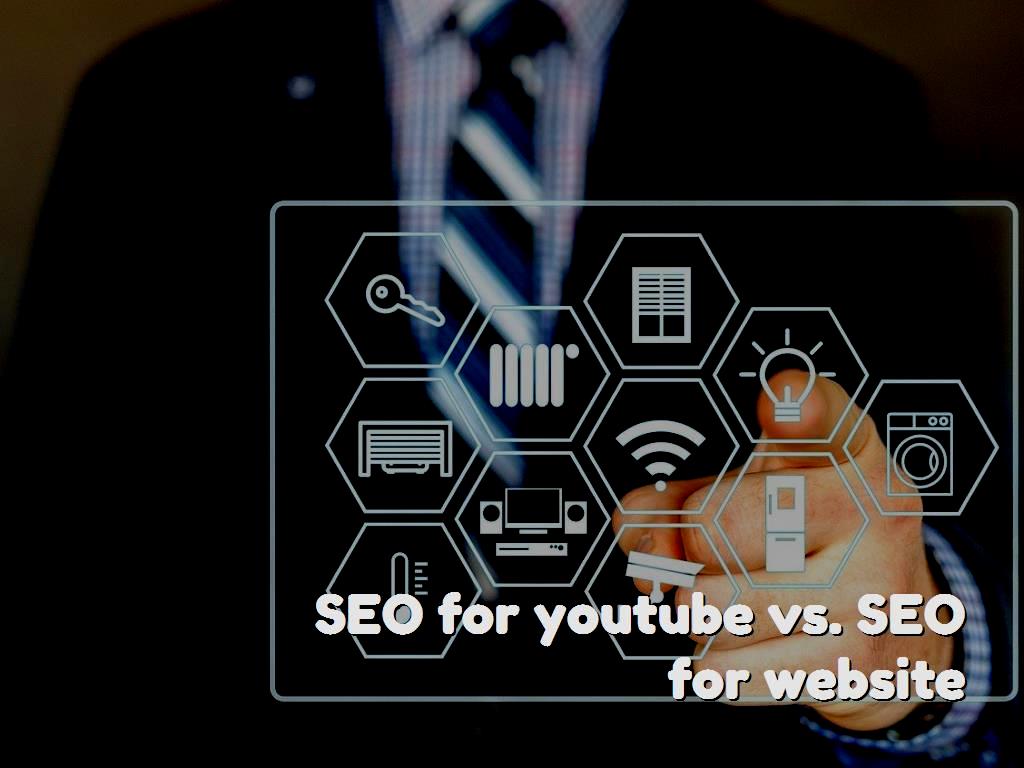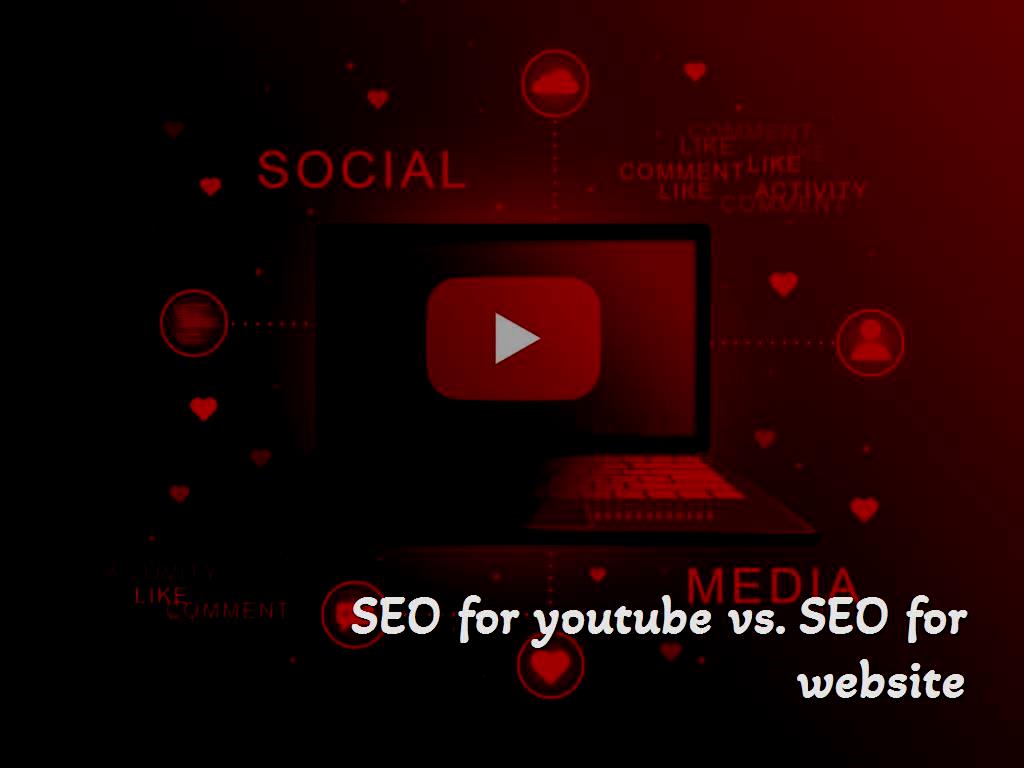SEO for youtube vs. SEO for website
8 minute(s) read | Published on: Jan 26, 2022 Updated on: Mar 06, 2022 |

About SEO
SEO stands for Search Engine Optimization, which has other equivalent words and can be defined as follows: SEO (search engine optimization) does not mean cheating or manipulating search engines with unethical methods. They are designed to help improve the visibility and relevance of websites in natural search results to achieve high rankings. SEO can be considered as a set of methods for strategically changing websites. This process addresses the most important page-related factors and increases their importance on the search results page.
SEO is not a simple process that is easy to implement because it requires a lot of knowledge. Search engines are unpredictable with the constant change of their ranking algorithms; therefore, it is the duty of SEO engineers to keep their information up to date. For example, Google's ranking algorithm has more than 200 criteria for ranking a site. Therefore, SEO engineers should consider the most important criteria for successful SEO implementation.
The history of Search Engine Optimization
The first search engines were launched in the early 1990s; Infoseek, Alta Vista, and Yahoo were some of the most popular. At that time, people looked at search engines as a list that, like the yellow page, was done in alphabetical order. As the Internet grew, newer search engines had appeared that used more sophisticated ranking algorithms. These algorithms used keyword density criteria (the number of times a keyword or phrase was used on a page divided by the total number of keywords) and keyword-like tags to understand the content of websites. Following this growth, SEO started its activity to increase the visibility of sites. With the development of page rankings by search engines, SEO engineers sought to find ways to rank these engines effectively using both ethical and unethical methods.
An article in the New York Times in November 1996 talked about web developers using immoral SEO techniques to get to the top of search results. This article explains how web developers can easily load a site with specific keywords hidden behind the site graphic, resulting in search engine counting those keywords and increasing the site ranking.
As mentioned, getting high rankings for specific keywords in the early days was much easier than today. Using immoral methods at the time was guaranteed to be at the top of the search results list. Search engine algorithms have become more sophisticated today, and it is very difficult for optimization engineers to manipulate search engines.
What is SEOs on YouTube, and what should be its strategy?
Search engine optimization (SEO) is the art of designing content that ranks high on search engine results pages. Many visitors come through search-engine, so you need to know what SEO is, especially SEO on YouTube, and implementing it will improve your content position in the search-engine. Unlike Google, which uses backlinks and other factors to evaluate rankings, to know what SEO is like on YouTube, you need to consider that SEO on YouTube includes channel optimization, playlists, metadata, descriptions, and videos. If you know what SEO on YouTube is and how it is used, you can optimize videos inside or outside the YouTube app.
You may be familiar with the basics of YouTube SEO, such as keywords, titles, meta descriptions, and tags. However, you can do more to improve video accessibility. Because search-engine robots cannot watch videos, they rely solely on textual data. So the main power is in reinforcing the text of the video. That is descriptions, captions, and subtitles directly impact the user experience, the level of engagement, the duration of watching the video, and SEO. Focusing on the texts will easily understand what SEO is like on YouTube and what points should be followed.
this for website
SEO for websites refers to strategies, techniques, and tactics to increase the number of visitors to get high positions in search-engine. Website optimization makes websites appear in search engines, which will help businesses grow. Website optimization causes your website to appear on the first page of search-engine when your keywords are searched. For SEO, your website must first have the technical infrastructure of SEO, and its technical problems must first be resolved to receive the best results.
Search Engine Optimization steps on YouTube
1. Find related keywords
Log in to your YouTube homepage and search for your keyword research and SEO Video. All the phrases displayed in this box are the most frequently used keywords in your topic. This makes it easy to find keywords and search terms on YouTube.
2. Write an attractive title
One of the most important parts of your SEO channel is the title, which you should be able to write attractive and audience-friendly, and remember that you should use the phrase in the title that you searched for in the section above. This will allow you to quickly get ahead of your competitors in ranking.
3. Write a description
In this section, you must write at least a thousand characters or 250 words about your video and use your keywords at least 6 to 8 times.
4. Tagging
You need to add key phrases about your video to the tags section to tag YouTube. Here, YouTube provides you with 500 characters that you can explain about your video.

The steps of SEO on website
1. Keyword Research
This step is one of the most important parts of the SEO process, and keyword research identifies the most relevant keywords for a website. Keyword research requires keyword search tools to help us find the right keywords for our website.
2. Optimize title tags
When your site appears in search results, the title is the first thing people see. Therefore, your titles must be concise and understandable. You can give more details in your meta. Once you have done your keyword research, the title tag is the most important place to put your best keywords. According to research by Moz, your best keywords at the beginning of the title may be useful for search engine rankings. However, avoid overuse of keyword stuffing or anything that could damage the readability of the title. For Google to display all of your titles, try to keep the number of characters in the title below 60. Also, make sure that each page has a unique title, and the content is not duplicated.
3. Create related Meta Titles
After the title, the meta description is the first thing people see when visiting your content in Google search results (directly below the page URL). In 2009, Google announced that the meta description content was not a factor in its ranking algorithm. Because this factor was no longer a requirement in ranking, many webmasters ignored meta description optimization. Hence, user behavior depends on the Google ranking algorithm.
4. On-Page SEOs
Google has become smarter, and just adding keyword-rich content will not help your rank after updating recent algorithms. On-Page SEO tips and factors that must be observed are:
- Write useful content.
- Do not just add keywords to your content. Provide valuable information instead.
- The structure of your site and the structure of your URL are very important.
- Your site should load fast.
- The site should be mobile-friendly.
- The site should be updated regularly.
5. Off-Page Optimization
Links are very important for ranking and building trust. But you do not have to create links from every website; You need to get these links from reputable websites, and they should be relevant to your domain. If you start linking to low-quality websites with poor content, you will not get good rankings.
6. Implement user-friendly URLs
If your URLs are vague and contain inappropriate words, people and search engine will not understand them. To create the right URL, summarize your article in as few words as possible, making your page more attractive to the user and understandable to Google. It's good to put relevant search terms in the URL, but avoid using too many keywords; because this may make your site look spammy and clumsy.
7. Speed up your site
In 2010, Google announced that page speed was included in its ranking algorithm. Search engine and users prefer sites with fast loading. If loading takes more than 3 seconds, 40% of customers leave the page; site speed should be a priority for any webmaster. Some common factors that lead to low page loads are:
- Non-optimized images will increase load time.
- Server response time
- Lots of plugins
- No HTTP compression
Click to audit your website SEO